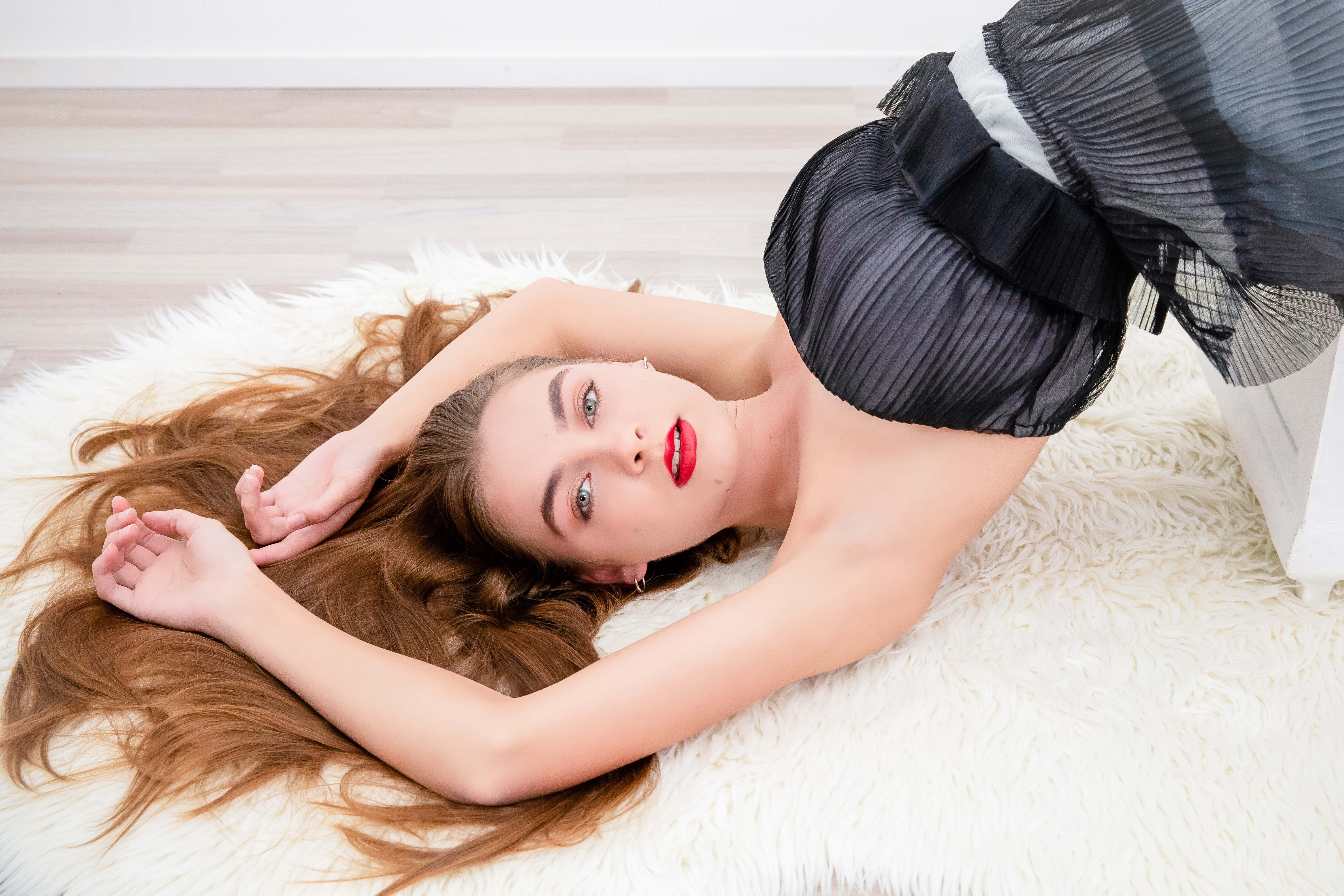The Beginner's Guide to Product Photography
If a picture deserves a thousand words, a sensational product image is worth a thousand web site check outs. Although I do not have information to back up that statement (yet), product photography can be extremely beneficial to your ecommerce website approach.
To reach your target audience members who prefer purchasing online, you likewise require to give your audience clear, attractive pictures of your products.
But product photography isn't as basic as directing as well as firing. Also one of the most fundamental products require the proper equipment, lighting, and space to generate gorgeous pictures that sell shoppers right from the purchase Browse this site page.
6 Product Photography Tips ( and also Examples) for Taking Photo That Offer
Right here are the tips, instances, and products you'll need to properly picture and also market your products in such a way that makes your visitors and prospects wish to transform.
1. Don't hesitate to utilize your smartphone's cam.
This is the component where I'm intended to encourage you to invest in a premium, 50-megapixel (MP) cam with a 100-millimeter screw-on lens. But I'm not mosting likely to do that.
If you already have a cam that fits this description, take advantage of it. But also for numerous types of items, it's completely acceptable to shoot product photos on a smart device.
More recent smart devices flaunt effective cam lenses as well as settings that enable you to enhance your shots for the various kinds of light and also environments you may shoot in.
If you require more convincing, just take a look at Apple's Shot On An apple iphone project and the photos that have resulted from it for many years such as this one:
2. Shoot from a tripod for photo uniformity.
Before explaining tripods, I'm obliged to begin with a principal policy: Don't prop your phone versus something strong to aim your lens towards the subject.
It's simply too very easy for this makeshift arrangement to move about throughout the shoot and also cause inconsistencies in your pictures' appearance. If you rest your electronic camera on, state, a pile of publications, simply be sure this plan doesn't alter throughout the shoot.
There's no harm in holding your camera yourself when shooting just a few product pictures for your ecommerce web site. Yet as your business grows, and you take much more photos of more items, it can be tough to systematize the product's positioning in each photo when firing portable.
To make sure consistency throughout your items, you'll require a tripod. As well as thankfully, buying one isn't constantly the huge, industrial-sized financial investment it utilized to be.
Right here are two types of tripods to consider.
Standard vs. Flexible
This is a tradition tripod-- there are conventional tripods offered for both electronic cameras as well as smartphones.
A flexible tripod can be controlled in a variety of means. You can bend its legs as well as place it on different surface areas to get the angle you need.
Mobile Grip
There's typically a screw on the top of your tripod which affixes to your cam to hold it in position. The underside of the majority of professional-grade cams has a screw opening just for this purpose, but smartphones can utilize the adhering to adapter:
The adapter grasps the sides of your smart device and also can screw right into either kind of tripod, allowing you to operate the cam regulates with the phone display dealing with exterior and also towards you.

Once you establish which mount you'll need, set it up in front of your product, and think about putting three pieces of tape on the ground to mark where you 'd like to keep each leg of your tripod over the course of the shoot.
3. Pick natural light or artificial light.
Never take too lightly just how certain types of light can boost (or prevent) your product photography. Keep in mind, customers obtain the very best consider an product face to face, where they can see every little thing they need to prior to investing in. The best lights setup helps you reveal those essential decision-making product attributes when all internet site site visitors need to go on is a photo.
A single lighting arrangement may not help every product-- a illumination plan that benefits some items could compromise the appearance of others.
There are two kinds of light you can select as your major source of light: natural and synthetic light.
Natural Light
Natural light describes sunlight-- easy as that. It's additionally called "soft light" because the sun casts a larger, softer variety of light than, say, a light radiating directly on the product. Ecommerce product shots thrive in natural light if:
The product is shot outside or suggested to be used outside.
The product is made use of by, endured, or shot with a individual (people have a tendency to look much better in all-natural light).You're attempting to emphasize the product's surroundings, as opposed to certain qualities of the product.
Below's an example of a shot making use of natural light:
Man-made Light
Fabricated light consists of candles, fire, and much more frequently, light bulbs. It's likewise described as "hard light" since it generates a smaller however more focused light surface. This sort of light deals with items with physical details that need to be highlighted to thrill an on-line consumer.
As a basic policy, stick to simply one kind of light per photo-- all-natural or artificial. Adding all-natural light to an unnaturally lit photo can soften a product that's implied to look sharp, and adding synthetic light to a normally lit photo can hone a product that's suggested to look soft. You do not wish to get in your own means.
4. Load or jump your light to soften shadows.
Whether you make use of natural light or man-made light, you'll need to decrease the darkness that any prospective difficult light casts on the contrary end of a product.
There are 3 methods to do this:
Load Light
Include one more, less-intense light source to supplement your main light. This additional light is called your fill light and is made use of as a counterbalance to soften the natural darkness your main light produces behind an object.
To do this, place your fill light contrary your major light so your product rests between both source of lights.
Flashbulb Bounce Card
A bounce card, or reflector card, is a small card that " mirrors" or "bounces" the main light back onto the surface area under your product to lower darkness.
Some bounce cards affix to the flashbulb of a professional video camera lens to diffuse the light from the camera's flash. This card sprinkles a softer light onto the topic from above your collection-- as opposed to directly at it-- so you do not have long darkness trail behind the things you're shooting.
Standalone Bounce Card
If you're firing from a smart device, a flashbulb bounce card isn't an option, given that you do not have a physical flash you can connect it to. Rather, make your own standalone bounce card positioned contrary your main light source.
For beginners to product photography, this bounce card can efficiently replace your fill light, which counters the tough light from the camera flash or lamp that's facing towards the front of your product.
5. Utilize a move or picture setting to highlight the product.
There isn't one ideal means to place your product, lights, as well as jump cards-- they can change drastically depending on your history. Yet don't select a history based on what's easiest to create. Backgrounds must look like just how you desire your customers to regard your product when watching it online.
Think about first whether you would certainly such as a white background or a more vibrant, real-world history. There's an very easy method to attain every one.
White History: Sweep
For white histories, it's not as straightforward as setting up a table against white drywall. Even mobile phone cams can pick up little blemishes on a white wall surface that you wouldn't discover with the naked eye. To capture a perfect white background without any edges or acnes, make use of a sweep.
A move is a big bendable sheet of paper, whose lower function as the surface area under your product and after that curves up right into a white wall behind the product.
On electronic camera, the move's curve is invisible, emphasizing crucial product information and enabling the item to own all of a internet site visitor's focus.
Real-World Background: Picture Setting
Dynamic, real-world backgrounds are really enticing when shooting items that have a specific use or are being modeled by a individual-- as you saw in the picture of the brief-case earlier in this overview.

Give your product depth as well as emphasis with picture setting, a picture setup on many specialist cams, and additionally readily available on many new smart devices. This setting blurs the background so the context https://click4r.com/posts/g/14960222 of the product is clear yet not completing versus the product itself.
Below is a extremely incredible photo of a HubSpot pen absorbed portrait setting on a Google Pixel 2 (I took this image myself). You can tell the pen rests on a desk with a computer behind it, yet the pen is still the focal point for viewers:

6. Fire a range of images.
My last ecommerce photography idea to you is to not stop at one photo per product. Equally as your clients look, hold, make use of, and also even try on product in a store, your internet site needs to fire a selection of images to simulate this extremely experience.
If you're shooting clothes, for instance, catch the garment of clothing alone-- that is, spread out on a white surface-- as well as on a mannequin whose shade contrasts the color of the product.
After that, for additional pictures, have the garments modeled on a individual, permitting you to take images of the product from the person's different poses and also angles.
Product Photography Set-Up
Next off, let's summarize what we just received-- right here's a listing of fast product photography set-up tips that you can refer to as well as share on your group:
• Choose a camera-- whether or not that indicates using your mobile phone.
• Get a tripod that benefits your video camera of choice.• Choose all-natural or synthetic illumination-- think about which option is best for your product and also atmosphere.
• Determine whether you'll fill or bounce light.• Select move or portrait mode.
• Take several different pictures to provide your customers variety.
Begin With Your Product Photography
Don't feel required to purchase every idea as well as piece of equipment at the same time. Use these product photography ideas progressively to see what makes your shop look one of the most presentable, and change your approach as your photography chops improve.